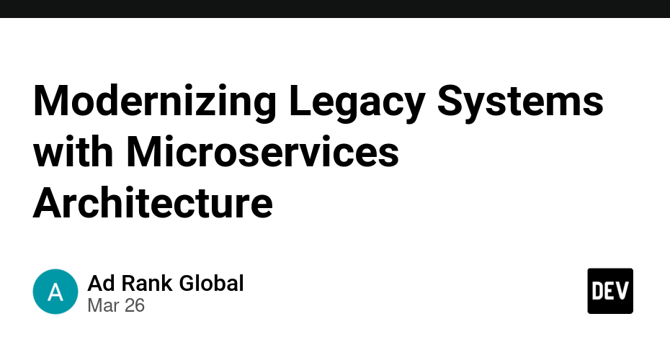Dev
1M
58

Image Credit: Dev
Modernizing Legacy Systems with Microservices Architecture
- Legacy systems pose challenges due to outdated technologies and architectures, hindering agility and performance.
- Microservices architecture offers a solution by breaking applications into independent services for scalability and efficiency.
- Legacy systems are relied upon for crucial functions, leading to high maintenance costs and integration challenges.
- Microservices provide autonomy, scalability, and flexibility, catering to modern business demands.
- Modernizing with microservices improves operational efficiency, scalability, and customer experience.
- Assessing legacy systems involves mapping dependencies and identifying limitations for effective modernization.
- Migration approaches include big bang or incremental methods, with focus on defining service boundaries.
- Choosing the right technology stack, implementing security measures, and managing data consistency are vital in the process.
- API integration plays a crucial role in modernization, requiring secure communication and compliance with data protection laws.
- Monitoring tools, versioning, and documentation are essential for efficient API management and interoperability in microservices architecture.
Read Full Article
3 Likes
For uninterrupted reading, download the app